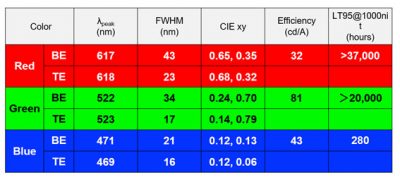INT Tech developed a 5,000 nits AMOLED microdisplay, is still on track for mass production in Q4 2021
Taiwan-based INT Tech announced that it has produced new AMOLED microdisplay samples at its $143 million fab in Taizhou in Zhejiang province, China, and the company is still on track for mass production in Q4 2021.

The new 0.7-inch INT Tech uNEEDXR display is a direct-emission display that features a brightness of over 5,000 nits, 3147 PPI and a low power consumption (less than 500mW@5000nits).








